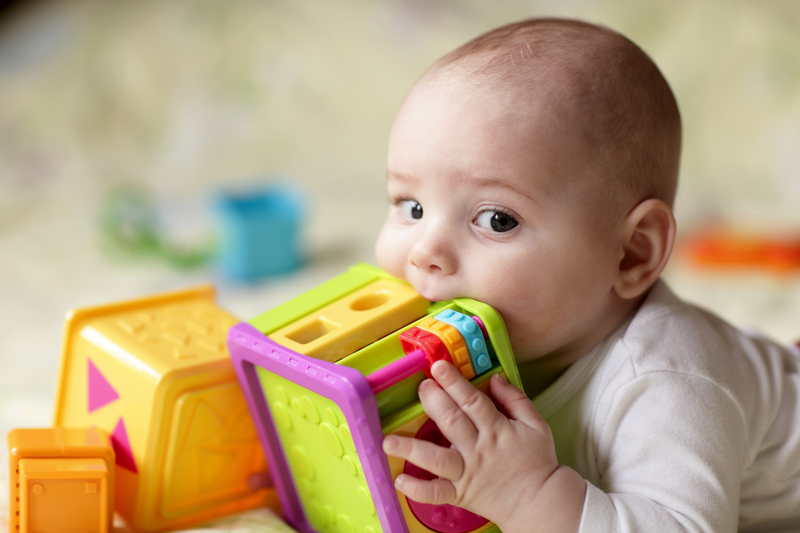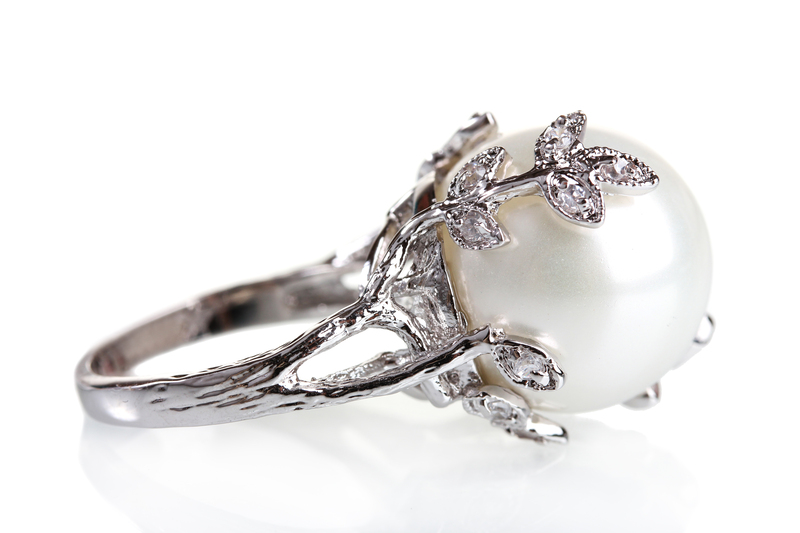Mastering the Craft of Jewelry Cleaning
Posted on 14/08/2025
Mastering the Craft of Jewelry Cleaning: The Ultimate Guide
Jewelry is more than just an accessory; it's a reflection of your personality, milestones, and cherished memories. As time passes, even the finest gems and metals can lose their original luster due to exposure to dirt, oils, and environmental pollutants. Mastering the craft of jewelry cleaning ensures that your treasured pieces remain as radiant as the day you acquired them. In this comprehensive guide, we delve into effective techniques, vital tips, and professional insights for jewelry care and maintenance.

Understanding the Importance of Proper Jewelry Cleaning
Cleaning jewelry is about more than just aesthetics. By regularly cleaning your precious items, you:
- Maintain their brilliance and shine
- Prevent corrosive buildup that can damage fragile components
- Detect early signs of wear or loose settings
- Preserve the value of heirloom pieces
Neglecting jewelry hygiene can cause dirt and oil to accumulate, leading to discoloration, tarnish, and sometimes irreversible damage. For anyone passionate about mastering jewelry cleaning, understanding the science behind the process is crucial.
The Science of Sparkle: Why Does Jewelry Get Dirty?
Jewelry, whether it's gold, silver, platinum, or adorned with gemstones, is exposed to various contaminants, such as:
- Body oils and sweat: Natural skin oils and sweat can form a film over jewelry, especially on rings and necklaces.
- Cosmetics and lotions: Creams, perfumes, and makeup often leave residues that dull gemstones and tarnish metals.
- Environmental pollutants: Dust, smog, chlorine, and even dishwashing detergents can affect the integrity and shine of your pieces.
Understanding these factors is essential for mastering the craft of jewelry cleaning.
Essential Tools and Products for Cleaning Jewelry
Before diving into cleaning techniques, it's vital to gather the correct tools and products. Using the wrong materials may do more harm than good!
Must-Have Jewelry Cleaning Supplies
- Mild dish soap or specialized jewelry cleaning solution
- Soft-bristled toothbrush or jewelry cleaning brush
- Lint-free microfiber cloths or cleaning wipes
- Bowl of lukewarm water
- Cotton swabs for reaching small crevices
- Jewelry polishing cloths (especially for silver and gold)
- Ammonia-free products (where necessary)
What to Avoid When Mastering Jewelry Cleaning Techniques
- Household cleaners like bleach or acetone, which can damage both metal and gemstones
- Abrasive materials such as paper towels, which can scratch softer metals
- Hot water for cleaning certain gemstones, since sudden temperature changes may cause cracks
The Step-by-Step Process to Clean Jewelry at Home
Mastering jewelry cleaning at home doesn't have to be intimidating. Here's a tried-and-true method that works for most jewelry types:
- Preparation: Fill a small bowl with lukewarm water and add a few drops of mild dish soap. Mix until sudsy.
- Soaking: Place your jewelry into the bowl and let it soak for about 10-15 minutes. This loosens dirt and grime from crevices.
- Gentle Brushing: Use a soft-bristled brush to gently scrub each piece, focusing on settings and clasps where dirt accumulates. Be extra careful with prongs and delicate areas.
- Rinsing: Rinse the jewelry thoroughly with clean lukewarm water, ensuring all soap residue is gone.
- Drying: Pat the jewelry dry with a lint-free cloth. Let them air dry completely before storing or wearing.
Tip: When cleaning jewelry with gemstones, check manufacturer instructions or consult your jeweler to prevent accidental damage.
Special Considerations for Different Types of Jewelry
Jewelry isn't one-size-fits-all, and neither are cleaning methods. Here's how to approach:
1. Gold Jewelry
Gold is non-reactive but can still accumulate grime. Avoid harsh chemicals and opt for mild soapy water. For deeper cleaning, use a dedicated gold jewelry cleaner or polishing cloth.
2. Silver Jewelry
Silver tarnishes over time due to oxidation. Use a silver polishing cloth or specialized solution to restore shine. Avoid storing silver jewelry in humid environments. Baking soda paste (made with water) can tackle stubborn tarnish spots.
3. Diamond and Gemstone Jewelry
Diamonds are durable, but settings can be fragile! Brush gently and inspect prongs for looseness. Never use bleach or abrasive products on gemstone jewelry.
4. Pearls and Soft Stones
Pearls, opals, and turquoise are porous and require gentle care. Wipe them with a soft damp cloth; avoid soaking. Never use ultrasonic or steam cleaners on these delicate pieces.
5. Vintage and Costume Jewelry
Vintage or costume pieces often use glue to set stones, which can dissolve in water. Use a barely damp cloth and dry immediately. Avoid soaking, as it may loosen adhesives.
Advanced Tips for Mastering Jewelry Cleaning Techniques
Once you nail the basics, consider these advanced cleaning methods to bring out the best in your collection:
Ultrasonic Cleaners
- Ultrasonic cleaners use high-frequency sound waves to dislodge stubborn debris. They're highly effective for hard gemstones and metals.
- Warning: Not suitable for pearls, opals, or glued settings. Always check if your item is compatible before use.
Steam Cleaning
- Steam cleaners provide a deep cleanse, removing residues from small crevices.
- Never use steam on porous stones or fragile settings.
Professional Cleaning and Inspection
- Schedule an annual professional cleaning with your jeweler to ensure settings are secure and stones are protected.
- Professionals have safe, specialized equipment for all jewelry types.
Jewelry Cleaning Mistakes to Avoid
Mastering the art of jewelry cleaning is as much about what not to do as it is about the right steps. Here are some common pitfalls:
- Using harsh chemicals: Chlorine, bleach, and even some "all-purpose" cleaners can severely damage jewelry.
- Ignoring loose stones or settings: Always check for stability before cleaning, to avoid losing precious gems.
- Over-cleaning: Excessive cleaning, particularly with abrasives, can wear down metals and weaken prongs.
- Forgetting about storage: Improper storage after cleaning (like tossing all jewelry into one box) can cause scratches and tangles.
The Role of Prevention: Everyday Tips for Clean Jewelry
Part of mastering jewelry maintenance involves keeping your pieces clean, so you spend less time on deep cleans. Here's how:
- Put jewelry on last when dressing, after applying makeup, lotions, and perfume.
- Remove rings when washing hands, applying creams, or working with household chemicals.
- Store jewelry in individual pouches or lined boxes to prevent scratches and tangles.
- Regularly wipe down frequently worn pieces with a soft cloth.
- Schedule periodic inspections for pieces with prongs or intricate settings.
Natural and DIY Jewelry Cleaning Solutions
For those who prefer eco-friendly or homemade options, DIY jewelry cleaning can be both effective and gentle:
- Soap and Water: Most gold and gemstone jewelry cleans well with a mild soap and soft brush.
- Baking Soda Paste: For sturdy silver pieces, a paste of baking soda and water can remove tarnish.
- White Vinegar: Soak silver jewelry in a mixture of 1/2 cup white vinegar and 2 tablespoons of baking soda for two hours, then rinse and dry.
- Club Soda: Soaking diamonds in club soda brings a renewed sparkle to their surface.
Note: DIY methods are not suitable for every jewelry type--when in doubt, consult an expert before trying home remedies.
Storing Your Jewelry: Ensuring Long-Lasting Shine
The right storage is an essential part of preserving cleaned jewelry:
- Keep each piece separated to prevent nicks and scratches caused by contact with other items.
- Use anti-tarnish strips or pouches for silver to reduce oxidation.
- Store pearls in breathable fabric pouches; never airtight plastic, as it can dry them out.
- Protect delicate chains by fastening clasps together before storing.

Frequently Asked Questions about Jewelry Cleaning
How often should I clean my jewelry?
As a general rule, you should give frequently worn pieces (like wedding bands or earrings) a gentle cleaning every 1-2 weeks. Deep cleaning and professional inspections are recommended every 6-12 months.
Can I use toothpaste to clean jewelry?
Toothpaste is abrasive and can scratch metals and gemstones. It is not recommended as a jewelry cleaning solution.
Is ultrasonic cleaning safe for all jewelry?
No. Ultrasonic cleaners are safe for solid gold, platinum, and diamonds, but should never be used with pearls, opals, emeralds, or glued settings.
In Conclusion: Elevate and Protect Your Precious Pieces
Mastering the craft of jewelry cleaning isn't just about keeping things shiny--it's about preserving the beauty, integrity, and value of your most treasured items. By understanding the unique needs of each material, using the right cleaning techniques, and storing pieces properly, your jewelry will dazzle for generations. Whether you're a collector, casual wearer, or jewelry enthusiast, the path to jewelry brilliance starts with informed, diligent care.
Embrace the art of jewelry cleaning and watch your cherished pieces radiate with every wear!





